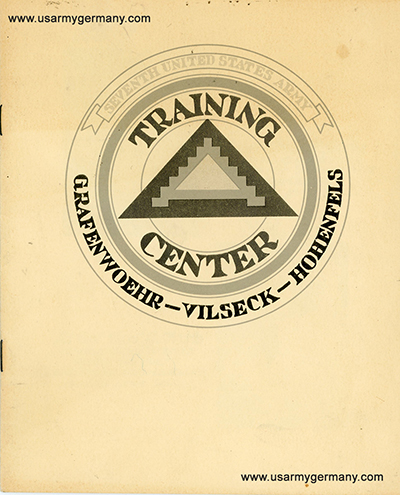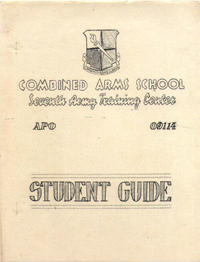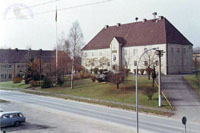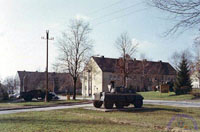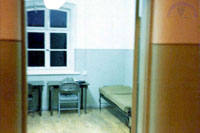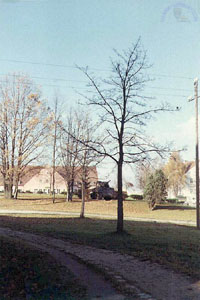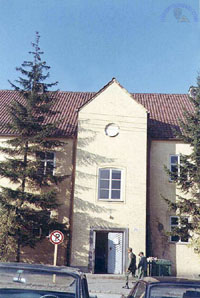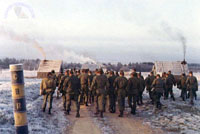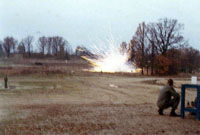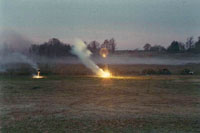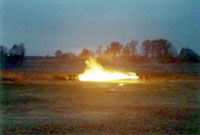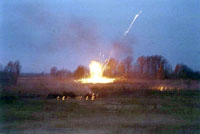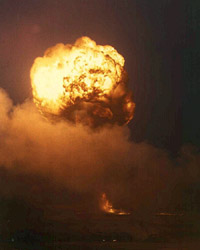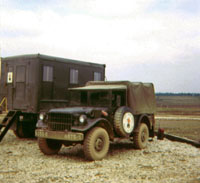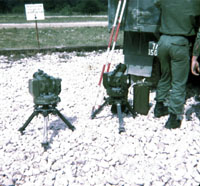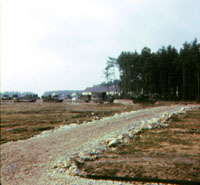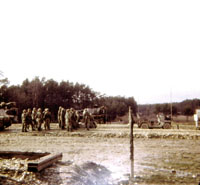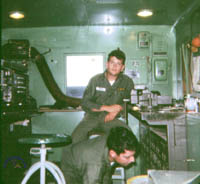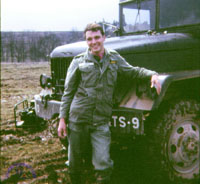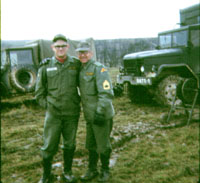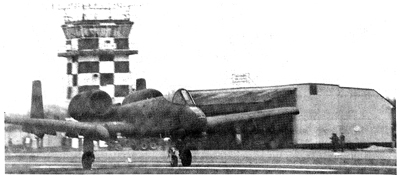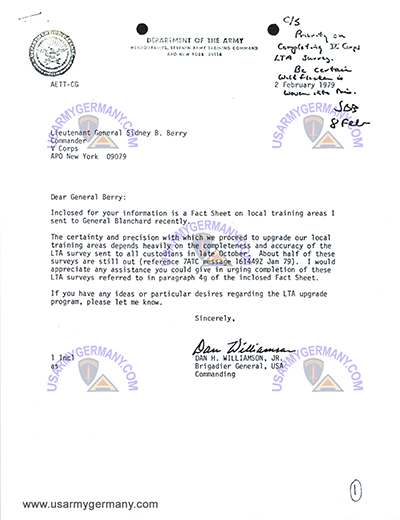| If you do NOT see the Table of Contents frame to the left of this page, then Click here to open 'USArmyGermany' frameset |
||||||||||
|
Seventh
Army Training Center |
||||||||||
|
|
||||||||||
|
||||||||||
|
|
||||||||||
| 7767 Tank Training Unit | ||||||||||
| 1949 | ||||||||||
| (Source: 7767 TTU Table of Distribution, 15 Oct 1949) | ||||||||||
|
||||||||||
| History | ||||||||||
| 1950 - 1991 | ||||||||||
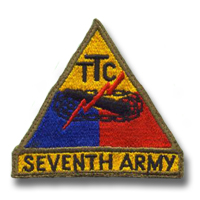 Seventh Army
Tank Training Center Pocket Patch
Seventh Army
Tank Training Center Pocket Patch |
||||||||||
|
(Source:
Seventh Army Training Command pamphlet, issued by the 7th ATC PAO)
|
||||||||||
|
||||||||||
|
POST
WORLD WAR II
Shortly after occupation troops entered the camp, a stockade was formed for German prisoners of war. In 1946, this became a camp for Polish and Ukrainian displaced persons and in 1947 and 1946, under the supervision of the International Refugee Committee, it was used as a Jewish Displaced Persons Camp. In May 1947, the U.S. Constabulary decided to establish a training area here for the newly activated 370th and 371st Infantry Battalions. The land area between Grafenwoehr and Vilseck was used and in 1948, the U.S. Constabulary Tank Training Center was established, with headquarters at Vilseck, until the miIitary camp at Grafenwoehr could be reconstructed from the war damage. SEVENTH ARMY TAKES OVER In 1949, the Vilseck Post was placed under the command of Seventh Army and became the Seventh Army Tank Training Center. Even though troop billeting and classrooms were primarily located near Vilseck, the Tank Training Center also operated special tank ranges in the Grafenwoehr area. Then, in February 1958, the Tank Training Center was re-designated as the Seventh Army Training Center, with headquarters at Vilseck. The entire Grafenwoehr reservation, which included the Grafenwoehr and ViIseck Sub-Posts, became one training center. In 1959, a newly remodeled Grafenwoehr Post became the headquarters of the Seventh Army Training Center. With the re-estabIishment of Grafenwoehr as the headquarters of the new Seventh Army Training Center, a number of other changes also took place. The area near Vilseck became the Seventh Army Combined Arms School, and at the same time, the Hohenfels Training Area, about 41 miles southwest of Grafenwoehr, with 40,000 acres, was assigned to the new Training Center. Thus, the Seventh Army Training Center became the largest training complex in Western Germany. |
||||||||||
TRAINING OFFERED IN ARMOR, ARTILLERY AND INFANTRY The two areas of Grafenwoehr and Hohenfels gave the U.S. Army in Europe the ability to train in all the combat arms. Grafenwoehr became the area for live fire exercises of armor and artillery, while Hohenfels, with its hills and small ranges, was better suited for infantry training. This, plus the Combined Arms School in Vilseck, gave the American fighting soldier in Europe not only classroom training in Armor, Artillery and Infantry tactics, but with the many ranges and training areas, he was also able to go into the field for practical application. WILDFLECKEN ADDED TO SEVENTH ARMY TRAINING CENTER The next big change for the Seventh Army Training Canter came in July 1967 when it was determined that all major U.S. Army training areas should be under one command. The Wildflecken Training Area was included and the merger added some 18,000 acres of training facilities to the 97,000 acres already in use at Grafenwoehr, Vilseck and Hohenfels. Within this total area facilities existed, and continue today, which can be used for firing combat weapons from a .45 calibre pistol to the Honest John Rocket. Maneuver areas, swim sites, artillery firing points, helicopter firing ranges and the vast amounts of space needed, encompassing various types of terrain, afford realistic training to keep the NATO soldier in general, and the U.S. soldier in particular, combat ready. U.S. ARMY SCHOOLS, EUROPE, BEGIN MOVING TO VILSECK The year 1970 saw still another move toward combining the training facilities of the U.S. soldier in Europe under one major headquarters. Kimbro Kaferne, near Murnau, began to phase out and in November, the Officer and NCO Maintenance Supervisors' Courses were moved to Vilseck. With this move, the Seventh Army Combined Arms School was re-designated as the USAREUR Combined Arms Training Center (CATC) on 1 July 1971. Another page in the book of the Seventh Army Training Center's constantly expanding support role was added in 1973 with the announcement that it would assume the support and command roles for all USAREUR individual training activities in Europe. Combat support courses from the Combat Support Training Center, Oberammergau, were moved to ViIseck. In addition, though remaining stationary at Bad Toelz, the Non-Commissioned Officers Academy and the Communications-Electronics Training courses were placed under supervision of Vilseck. First to move to Vilseck were the NBC Defense Officer and NCO Courses and the Data Processing Courses in November 1973. In January 1974, with the movement of the Intelligence, Military Police, Legal, Logistics, Card Punch, Systems Design and Analysis, and the Command and Training Management Courses to Vilseck, the military training activity again was renamed. The USAREUR CATC was re-designated the Seventh Army Combined Arms Training Center (7A CATC). CHAIN OF COMMAND CHANGES Until 1 July 1974, the 7th Army Training Center was a USAREUR assigned unit. Seventh ATC's Major Training Areas (Grafenwoehr, Hohenfels, Wildflecken) and the 7A CATC at Vilseck were under the supervision of HQ, 7th ATC in Grafenwoehr which answered directly to U.S. Army, Europe, (USAREUR) headquarters in Heidelberg. PROJECT CHASE Consolidation of Headquarters and Area Support Elements was implemented on 1 July 1974. Under this re-organization, three headquarters -- 21st Support Brigade in Kaiserslautern, V Corps in Frankfurt and VII Corps in Stuttgart -- assumed all logistic and base support functions in West Germany. As part of PROJECT CHASE, 7th ATC began reporting directly to VII Corps as its higher headquarters. This new concept gave local community commanders a more responsive means of improving local support services. Under the control of a regional headquarters, the necessity of sending actions through a distant headquarters that assigns priorities was eliminated. PERMANENT PARTY INCREASES WITH "HELL ON WHEELS" On 4 March 1975, the 3rd Brigade, 2nd Armored Division, with the motto of "Hell on Wheels", was deployed from Ft. Hood, Texas, to the 7th Army Training Canter. Called "Brigade 75", it increased NATO combat power. The Mechanized Heavy Brigade consists of the Brigade Headquarters and 498th Forward Support Battalion on a permanent basis at Grafenwoehr, while a cavalry troop, a field artillery battalion, an armor battalion and an engineer company at Grafenwoehr, and a mechanized infantry battalion at Hohenfels and Wildflecken, all rotate to and from the United States on a six month basis. EXPANSION AND REORGANIZATION During the American Bicentennial year of 1976, many changes occurred within the 7th Army Training Center's structure. Effective 1 July 1976, the 7ATC was re-designated as the Seventh Army Training Command and re-organized to serve as the focal point for training management in the United States Army, Europe. Previously, in March 1976, 7ATC Commander Colonel Thomas P. Lynch was promoted to Brigadier General. With the re-designation of the 7ATC, General Lynch became the former Training Center's last and Training Command's first Commander. The Major Training Areas and the 7A CATC became sub-communities of the new command. Two new sub-communities were incorporated into the command, Amberg and Bindlach. The 7ATC Military Community now encompasses 7,540 square miles. 7ATC ACQUIRES NEW ORGANIZATIONS To accomplish the command's expanded role, many training functions previously performed by the USAREUR staff were transferred to 7ATC. Two new organizations, the Combined Arms Training Directorate (CATD) and the Training Support Activity, Europe, (TSAE) were established. In July 1976, 7ATC acquired the directorate, CATD. Its mission: to assist USAREUR commanders in their goal of maximizing available time and resources. CATD stresses dissemination and implementation of TRADOC developments. CATD also evaluates training activities at the Major Training Areas. Through CATD, major USAREUR training needs are identified and data collected and evaluated to determine the validity of training programs and activities. The directorate consists of three branches -- Training Management Branch, Collective Training Branch and the Individual Training Branch. Effective 1 July 1976, the TSAE was activated under 7ATC supervision. It provides audiovisual guidance and coordinates resource management of audiovisual activities throughout USAREUR. TSAE has technical supervision over the Training and Audiovisual Support Centers (TASC) in USAREUR's five major commands (21st Support Brigade, V Corps, VII Corps, 7ATC and Berlin) and over the Training and Audiovisual Support Offices (TASO) in their sub-communities. 7A CATC MISSION EXPANDS As part of the new command, 7A CATC acquired a three-fold mission: To provide theater-oriented training necessary in maintaining and increasing command combat readiness; To provide training on new equipment and theater-oriented combat procedures; To provide officer, enlisted and civilian personnel training supplementing previous training. To carry out combat readiness missions, 7A CATC supervises the Basic NCO Courses at Vilseck consisting of nine combat arms military specialties in addition to the Primary Leadership Course in Bad Toelz. To supplement previous training, 7A CATC supervises training of the Race Relations-Equal Opportunity, Alcohol & Drug Abuse Control, Resource Management and Facility Engineering Courses in Munich and the Automatic Data Processing Course at Zweibruecken. 7ATC MISSION |
||||||||||
(Source: George K. Cabral, Seventh Army Joint Multinational
Training Command (7A JMTC)) |
||||||||||
George is compiling an updated history of the JMTC at Grafenwöhr. It is still in the building stages. Input from readers is welcome. |
||||||||||
7ATC JMTC HISTORY The area that JMTC now occupies at Grafenwoehr and Vilseck, was first used in 1907 by Prince Luitpold, Regent of Bavaria, to train the Third Bavarian Corps. The first artillery round fired at Grafenwoehr went downrange at 8 a.m., June 30, 1910 and by 1911, the Camp of Grafenwoehr was declared fully operational with about thirty-seven square miles of fir forest as a training area. After World War I, Grafenwoehr was taken from the control of the Bavarian Army and placed under the Berlin High Command. At the same time Grafenwoehr was used to train the German Reichwehr, the 100,000 man army authorized under the Versailles Treaty. In 1933, Hitler became Chancellor of Germany and by 1935 the Reichwehr had been forgotten. Completely disregarding the Treaty of Versailles, Hitler’s Wehrmacht was created and grew to the point where available manpower was its only limitation. During this period, Grafenwoehr expanded and local inhabitants were evacuated to make room for larger training facilities until the training area covered fifty square miles. |
||||||||||
1982 |
||||||||||
| (Source: Training Times, July 1982) | ||||||||||
| 7ATC colors
pass Col. Coffman hands BG Foss command; CINC assists in traditional ceremony 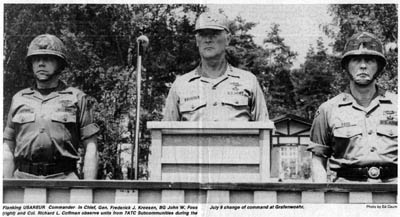 (l to r) Col Richard L. Coffman (departing CO); CINCUSAREUR Gen Frederick J. Kroesen; BG John W. Foss (incoming CO) |
||||||||||
| GRAFENWOEHR -
The Seventh Army Training Command welcomed its new commander, Brig.
Gen. John W. Foss, here July 9 with a parade and traditional change
of command ceremony. With USAREUR Commander-in-Chief General Frederick J. Kroesen participating in the event, outgoing 7ATC Commander Col. Richard L. Coffman passed the colors to the new commander. As 7ATC commander, Brig. Gen. Foss will also hold the position of Assistant Deputy Chief of Staff for Operations-Training, USAREUR and Seventh Army. Flags whipped in the afternoon breeze as 7ATC Command Sergeant Major and Commander of Troops for the ceremony, CSM Harvey W. Kahl, presented the command to Brig. Gen. Foss. Lines of starched fatigues and highly shined boots added sharpness to the traditional ceremony. The quick responsiveness to orders of the 7ATC troops was crisp and professional despite the hot midday sun. Over 150 soldiers from 7ATC units paraded for reviewing officers and the German/American audience. Units participating in the ceremony were: HHD, Hohenfels Training Area; HHD, Wildflecken Training Area; Support Co., CATC, Vilseck; HHC, Grafenwoehr Training Area; HHC, 7ATC; Regional Personnel Center, 7ATC; and the 536th MP Co. The 8th Infantry Band from Baumholder provided the music and was conducted by CWO Dennis S. Stone. State flags, held by soldiers, lined both ends of the parade field as Col. Coffman turned the colors over to the new commander. State flag bearers were from HHC, 7ATC and HQ Battery, 3/60th Air Defense Artillery. Brig. Gen. Foss comes to 7ATC from his position as chief, Joint U.S. Military Advisory Group, the Philippines. Brig. Gen. Foss enlisted as a Private of Infantry in 1951 and was commissioned in the Infantry upon his graduation from the United States Military Academy in 1956. He is also a graduate of the Infantry Officer Basic and Advanced courses, the United States Army Command and General Staff College, the United States Army War College and holds a Masters Degree in Public Administration. Brig. Gen. Foss' major duty assignments include service as commander, 3rd Battalion, 12th Infantry, 4th Infantry Division, Vietnam; assistant G-3 for training, VII Corps; combat developments staff officer and chief, Developments Planning Group, Office of the Deputy Chief of Staff for Combat Developments, HQ, TRADOC; chief, Division Restructuring Study Group, HQ, TRADOC; and commander, 3rd Brigade, 1st Cavalry Division, Fort Hood. His decorations and awards include the Silver Star with Oak Leaf Cluster and over 30 other U.S. and foreign decorations. Assignment as 7ATC commanding general, marks the beginning of Brig. Gen. Foss' fourth tour of duty in Europe. He is accompanied by his wife, Gloria, and daughter, Julia. Col. Coffman, who arrived at 7ATC in April 1980, held the deputy commander/chief of staff position until March 6, 1982 when he assumed command. Col. Coffmann was commissioned an Armor officer upon graduation from college 1956. He is a graduate of Armor Officer Basic and Advanced courses, the U.S. Army Command and General Staff College, U.S. Army War College and holds a Masters Degree in Counseling. Col. Coffman's major duty assignments include service as a base commander in Vietnam; operations officer, Vietnam; commander, 2nd Squadron, 11th Armored Cavalry Regiment, Vietnam; Army General Staff Officer, Washington, D.C.; chief of program analysis, Fort Knox; secretary of armor, Fort Knox; director of armor doctrine, Fort Knox; commander, 1st Armored Training Brigade and deputy commander/chief of staff, 7ATC. He is accompanied by his wife Betsy and son Ross. After the passing of the command colors, Col. Coffman resumed his previous duties as 7ATC deputy commander/chief of staff. The 7ATC Military Community encompasses all U.S. military sites and installations within a 7,500 square mile section of northeast Bavaria. Military communities encompassed by 7ATC are Grafenwoehr, Hohenfels, Wildflecken, Vilseck, Amberg and Bindlach. Military installations at Regensburg and Bayreuth are directed by 7ATC, as are border camps at Roetz, Weiden, Brand and Regen. Elements of 7th Army CATC are located at Munich, Bad Toelz and Zweibrucken. The 7th ATC supports all USAREUR training, operating Europe's three U.S.-controlled Major Training Areas, Grafenwoehr, Hohenfels and Wildflecken, along with institutional training at the Combined Arms Training Center in Vilseck. Other training support operations include the U.S. element of the NATO Missile Firing Installation, Crete; the Training Support Activity - Europe, supplying theater-wide audio-visual equipment and training aids; and the U.S. Army Reserve Affairs, Europe with headquarters in Munich. |
||||||||||
|
||||||||||
|
|
||||||||||
| ADDITIONAL PATCHES | ||||||||||
|
||||||||||
|
|
||||||||||
|
|
||||||||||
| Grafenwöhr Training Area | ||||||||||
1983 |
||||||||||
(Source: Training Times, February 1983) |
||||||||||
| Graf's New Ranges by Fred Cox About six years ago an operations officer took a hard look at the capabilities of existing ranges at Grafenwoehr Training Area. He then matched his computations with capabilities of the new hardware being developed by the Army. Once he determined that the ranges could not support advanced weaponry, primarily the M-1 Main Battle Tank and M-2/3 Infantry/Cavalry Fighting Vehicle, the officer briefed the 7ATC commander. That's when the "ball got rolling" and a Range Upgrade Project was initiated. Concept of the modernization project was this: First, upgrade existing ranges at GTA to support the new weapons, and do it in a cost effective way. Next, design into the ranges troop billeting and messing areas so training units may come to GTA and efficiently accomplish training requirements. Finally, complete the entire upgrade by the end of Fiscal Year 1984. Phase One of the project, labled Graf 82, was initiated in that same fiscal year. It included the upgrade of six ranges. The second phase is scheduled to begin about April and be completed by December 1983. It includes modernization of four ranges which are primarily being designed to support the M2/3. |
||||||||||
|
||||||||||
All Changes The units also have a safety feature. "By pressing one button you can drop all targetry on the range," says Gray. "Another safety aspect is that you cannot display a target which is out of safe - the PCU will not display it. PCU operators will keep busy; GTA is now "armed" with a combination of more than 500 pop-up and moving target systems. |
||||||||||
| (Source: Training Times, April 1983) | ||||||||||
| 'Phase Two' upgrade set to commence A "Graf 83" Ground Breaking Ceremony is scheduled to be held at Grafenwoehr Training Area's Range 42 May 5. The 3:30 p. m. ceremony is programmed to officially kickoff Phase Two of the three-year, multi-million dollar GTA Range Upgrade Project. It also signifies the return of about 3,000 soldiers from the 18th Engineer Brigade, Karlsruhe. Phase Two is scheduled to be completed by December. It includes the upgrade of ranges 34, 39, 42 and 45, which are primarily being designed to accomodate the M-2/3 Bradley Fighting Vehicle. The entire construction effort will be centered around the Bravo Impact Area; Alpha Impact Area will remain operational. Milestones established by the engineers include completion of all uprange construction by the first part of this summer, and initiation of downrange construction by midsummer. Other elements of the 18th Engineer Brigade are scheduled to work at Wildflecken Training Area on a planned upgrade of Range 9, according to a brigade oifficial. |
||||||||||
| (Source: Training Times, May 1983) | ||||||||||
| 18th Engineers on roll by Frank Cox Permanent party residents at Grafenwoehr have noticed many soldiers from the 18th Engineer Brigade using main post facilities. The engineers are seen daily at the PX, commissary, gym and elsewhere on post. But the locals have not had much of an opportunity to see all that the engineers have been doing on the Graf 83 Range Upgrade Project. |
||||||||||
|
||||||||||
| He says some areas on ranges 42 and 45 will be earth shocked. "That entails placing explosives -- normally bangalore torpedoes -- to detonate unexploded ordnance in place. All earth shocking will be performed by the EOD personnel. "The 10th Engineers will set up the munitions for earth shocking." The major says that once the ranges are cleared the downrange construction will begin. Maintenance support for the brigade is provided by 547th Engineer Battalion (V Corps), 237th Engineer Battalion and 71st Maintenance Battalion (VII Corps). Baldwin says the 547th and 237th will be up to full strength by about July 1. German units helping the construction effort include the 8551st Civilian Support Group, Grafenwoehr, and the 6970th Civilian Support Group, Ettlingen. "The (German) support groups ere providing construction of all range towers, and they are assisting with heating and electrical work," says the major. "Members of their groups are also operating the paving machine for the concrete tank parks." Baldwin says troop morale is high. He says since mid-April the engineers have been "on the move" with the project. "They want to complete the project and go home; " he says. "One real plus is that many of them are using last year's experience. Things are going more smoothly because they have their experience to draw on." |
||||||||||
| Baumholder Training Area | ||||||||||
| Hohenfels Training Area | ||||||||||
|
|
||||||||||
| Wildflecken Training Area | ||||||||||
1967 |
||||||||||
| (Source: STARS & STRIPES, July 1, 1967) | ||||||||||
In July 1967 when it was determined that all major U.S. Army training areas should be under one command, the Wildflecken Training Area, formerly assigned to V Corps, was reassigned to 7th ATC. The merger added some 18,000 acres of training facilities to the 97,000 acres already in use at Grafenwoehr, Vilseck and Hohenfels. Link to article. |
||||||||||
| Combined Arms School, Vilseck | ||||||||||
|
||||||||||
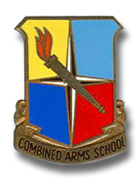 Combined Arms School DI Combined Arms School DI |
||||||||||
1960 |
||||||||||
(Source: Email from Rita McKenzie, daughter of MSgt Glen Jannusch, Communications Section, Combined Arms School, Vilseck) |
||||||||||
Although there is no date on the Informaion Booklet, I have determined that the booklet was issued late 1959 or sometime in 1960. Col Edwin H Burba, mentioned in the booklet as the commandant of the Combined Arms School, assumed command of CAS in July 1959 and was promoted to Brig Gen in January 1961. So, it is probable that the booklet was issued in that time frame. Before assuming command of CAS, Col Burba was the CO of Combat Command "B," 2nd Armd Div at Fort Hood, Tx. |
||||||||||
1967 |
||||||||||
| (Source: Email from Richard Tracy) | ||||||||||
| I also have some photos of the post (ca. November 1967), CBR School (barracks, outside
"classrooms," demonstrations [white phosphorus (WP), thermite, "nuclear simulator," etc.
and so on.... Vilseck was a very strange place: everything seemed so ... "temporary".... Heating in student
barracks was provided by a diesel heater/stove in each room: no central heating plant, etc. At the snack bar (and mess hall?), they prepared food using Army-issue field ranges: everything
was "portable"! Well, it WAS 1967 ... and the place WAS just west of the Czech border ... and
if "the balloon went up" for real ... they probably would HAVE to "bug out" ... leaving "not much"!
At night, you could hear the small arms (rifles, machine guns, etc.), tanks, and artillery (105mm guns went BANG, the 155mm jobs went BOOM, and the 8-inchers went KA-BOOM [the last was also accompanied by "a minor earth tremor"!] at Graf, which was kinda neat -- but very "spooky"! The CBR School classrooms on post were in an old Wehrmacht cavalry stable: the original cast-iron (horse) feeding troughs were still mounted on the walls; they had been filled in with concrete, and were being used as shelves! (As a student of military history, I found it all ... "fascinating"!) Life in the U.S. Army in THAT part of West Germany was VERY different than "in the rear"! Before I forget it, Vilseck even had an M8 armored car -- still with its "Constabulary" markings! |
||||||||||
|
||||||||||
| Maintenance Department, Combined Arms Training Center | ||||||||||
1973 |
||||||||||
| (Source: STARS & STRIPES, April 9, 1973) | ||||||||||
The Maintenance Department at the Combined Arms Training Center in Vilseck offers 11 courses of organizational and support maintenance. CO of the department is Maj Frank A. Hughes, Jr. There are 120 people assigned to the department which is divided into an Organizational Maintenance Division and a Support Maintenance Division. The courses taught include courses on track and wheeled vehicles, construction equipment, power generators and maintenance of turret artillery. More than 5,800 students go through these courses each year. An average of 40 students at a time attend the three-week Wheeled Vehicle Organizational Maintenance course. Some of them are already very knowledgeable and are returning for refreser training or cross-training, others have had very little training or no training at all. The course has nearly $1 million dollars worth of various types of engines for students to work on - from jeep engines to the new 5-to diesel. In addition, there are about $25 million in tools and equipment available for the course. Four students at a time work on an engine. During practical examinations, they receive timed tests as they work on engines that have been bugged with problems. The students are graded on the length of time it takes to locate a problem and the maintenance techniques they use to repair the engine. Another course taught at the Maintenance Department is the two-week Small Arms (Maintenance) Course. This course instructs personnel assigned to USAREUR units in how to maintain and repair individual and crew-served weapons. About 700 soldiers are graduated each year from the Small Arms course. The small arms course has been taught at Vilseck since 1971 after having been moved there from Murnau where it was previously located. Six highly trained instructors are assigned to the section. Chief of the Small Arms Section of the Maintenance Department is SFC Edward L. Markley. 80 hours of instruction are offered to the classes. About 76 hours are spent in the classroom learning how to trouble-shoot problems and to tear down and reassemble such weapons as the .45-caliber pistol, .50-caliber machine gun, the M79 grenade launcher, 90mm recoilless antitank rifle, and the tank mounted 7.62mm amd .50-caliber machine guns. Special instruction on the 20mm gun can be offered if a unit or command requests that training through USAREUR channels. Students attending the course are also instructed on the Army's complex maintenance system and numerous forms, as well as how to properly use Army publications so they can order parts correctly. Most of the students have had little previous training with small arms. Since units are not authorized 'armorers,' the soldier usually taking care of a unit's armory is the supply clerk, who has received a few hours instruction on small arms during the supply clerk course at Ft. Lee, Va. Students receive two practical examinations during the course. Weapons are rigged with certain deficiencies which the student must first locate and then explain to the instructor what is wrong and how to fix it. They are also required to find the federal stock number of parts and then explain to the instructor who is authorized to replace or repair those items. |
||||||||||
| 350th Ord Det (Ballistic & Technical Service) | ||||||||||
| (Source: Email from Ron Claypool, 350th Ord Det (B&TS), 1967-68) | ||||||||||
| The 350th Ord Det
B&TS was in Vilseck, Germany and attached to the 7th Army Training
Center. The unit was no larger than 15 personnel. I was Unit Clerk for quite awhile so I know some information about the command structure in 1967-1968. I was transferred from Nelligen Barracks, 538th CC&S Co., to the 350th Ord Det on a special levy from the top of 7th Army Command. The 350th was understrength and my MOS was 45C20 Field Artillery Repair and I was ordered to the 7th ATC Vilseck Post. I tried to contest this transfer with the 7th Army IG, but to no avail. The IG had sympathy for my reasons to stay at the 538th CC&S in Nelligen Kaserne. I had met a German family and got to know them very well. Getting back to the 350th. At that time there were 3 Army B&TS units in the US Army. One in Germany, one in Okinawa and one in Aberdeen, Maryland. When our equipment needed repair it was sent to Aberdeen, Maryland. The 350th Command Structure was 1 Captain, 1 Lt, 1 NCO, 2 E-5s and the rest lower ranking enlisted men. I have pictures of the unit and its function in the field. The unit mission statement was on our front office door in english and german. I have it as
I was with the 350th from Feb. 1967 to Aug. 1968. I hope this information helps and as the photos I can send JPGs or BMPs. Sincerely Ron Claypool |
||||||||||
| Air Force Liaison Office | ||||||||||
|
(Source: Training Times, May 1983)
|
||||||||||
|
TAC AIR: Air Force captain controls all air power
within 7ATC through experience and skill by Frank Cox "Flying computers" like F-4s, F-16s, A-10s and Cobra helicopters flash through Seventh Army Training Command's air space routinely. How to they get here? Obviously they fly. But who ensures tactical combat aircraft are provided an opportunity to train within 7ATC? Bringing "fast movers" onto Grafenwoehr Training Area, for example, requires a lot of coordination between the Air Force and the Army. Providing that coordination is the U.S. Air Force, Europe, Liaison to 7ATC, Capt. Gary L. Buis. He is the TAC AIR (tactical air) man within the command. |
||||||||||
|
||||||||||
Like a triangle, his job has three sides. "First," he says, "I provide liaison between USAFE and the 7ATC commanding general and his staff; I tell the general what the Air Force can do for him and answer any questions that may arise which concern the Air Force. "My secondary job is the one I spend most of my time on. I'm responsible for all (tactical combat) aircraft that come onto Grafenwoehr Training Area. "And, during wartime, I become a Forward Air Controller for an Army unit." His job is critical to pilot training on GTA because, according to Buis, it's the only land based tactical range where the Air Force can routinely drop and fire live ordnance in USAREUR. "The way that impacts on 7ATC and the Army is that without this range it would be difficult to get the required unilateral and joint training that we need to support the Army," says Buis. He says his goal is to achieve 50 percent unilateral Air Force training and 50 percent joint training, with the Army and Air Force working together. The captain says it's vitally important that the Army and Air Force train together. "I just can't stress the fact that the Army and Air Force train together the same way we'll fight together;" he says. To stop any confusion, Buis does not use the term Combined Arms Training when referring to operations involving the Army and Air Force; he uses Joint Combined Arms Training. He says J-CAT is all live fire. "Another thing that adds realism to J-CAT exercises is an Army asset called GRETA (Ground Radar Emitter Trainer for Aviators). It sits on the ground and emits a signal that simulates a Triple-A or missile threat which is picked up in the pilot's cockpit. "So when you put GRETA, artillery, infantry, Cobras and A-10s all in one scenario it simulates a real wartime situation in a single high threat, high tactical environment." The captain says it has circulated, by word of mouth, that J-CAT is very valuable. Commanders at all levels have a vested interest in J-CAT. Buis explains how they may realize the training: "When a brigade or battalion commander decides he's going to Grafenwoehr for training, and he wants to work with the Air Force, his operations officer coordinates with the unit's Air Force liaison officer. "I look at my calendar to determine if the time the unit wants for J-CAT is booked. If it's not I advise the ALO and he then goes to his (Air Force) S-3 and requests air support through normal channels. "Now the Army, myself and the Air Force know about the planned training. "Representatives from all units involved then gather in my office and coordinate the training on my map table. We lay out our safety fans, decide on targets, and deconflict either by time or distance. "Then we get together with Capt. Andy Villastrigo, the GTA Safety officer. He looks at our plans and says, 'No you can't do this, yes you can do that' and verifies that we're not doing anything, unsafe. "Once Villastrigo approves the training it is published in the training bulletin and we're ready to do it." Buis says he and Villastrigo have worked so close together for the last year-and-a-half that J-CAT coordination has become routine. "We've done it so many times now that it takes five minutes whereas it used to take hours; we have a very sound, safe system," he says. The young captain, who says he'd rather be flying, is departing June 11 for Myrtle Beach, S.C., where he'll pilot an A-10. His replacement, Capt. Fred L. Tasker, is already at 7ATC learning the job. Tasker, who is also an A-10 jockey, came to the command from the Royal Air Force Base, Woodbridge, England. |
||||||||||
|
|
||||||||||
| Local Training Areas | ||||||||||
| Letter sent by BG Dan H. Williamson, Jr., CG 7th ATC to LG Sidney B. Berry, CG V Corps, regarding ongoing upgrades to local training areas and training facilities, 1979. | ||||||||||
| Related
Links 7th Army Training Command - 7th ATC's official web site; includes online version of the Training Journal. |
||||||||||
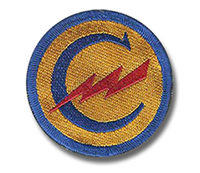
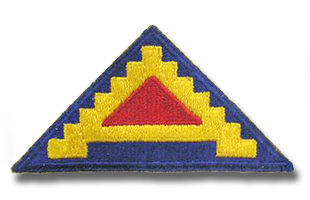
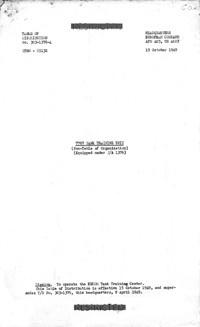
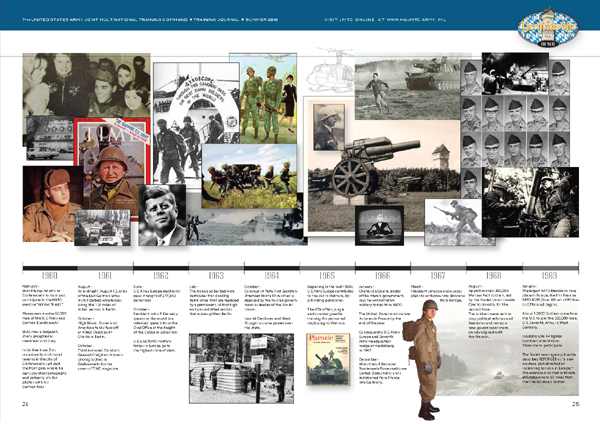
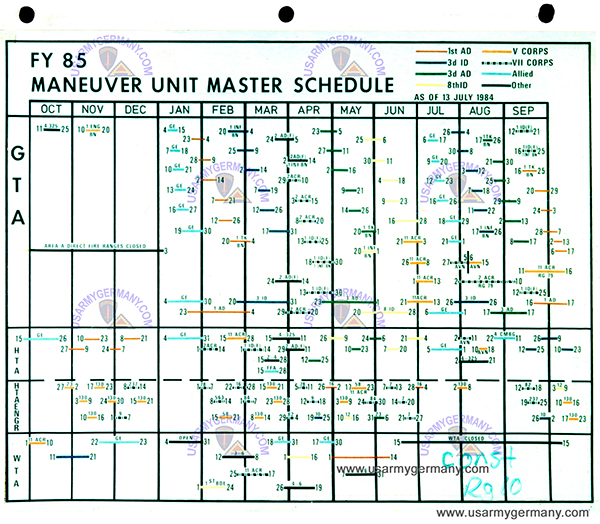
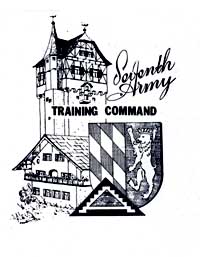
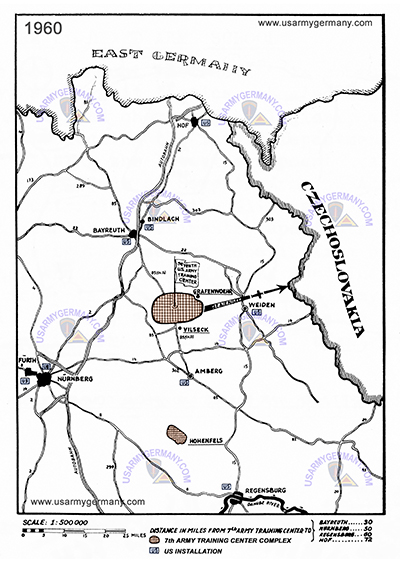
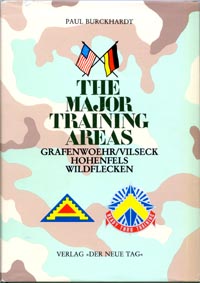
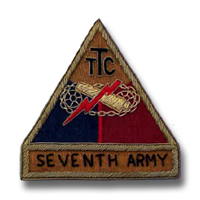

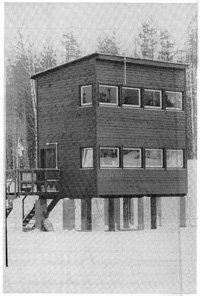
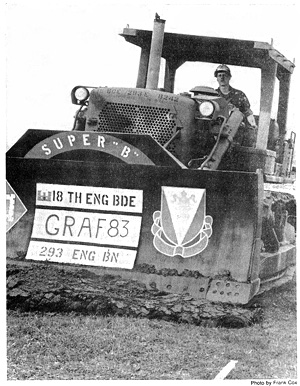
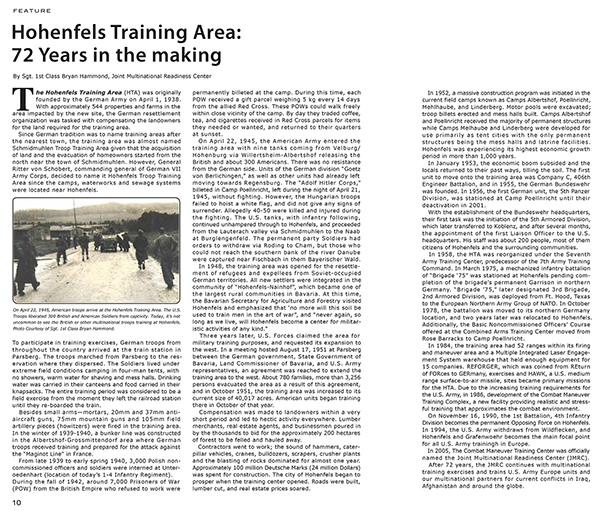
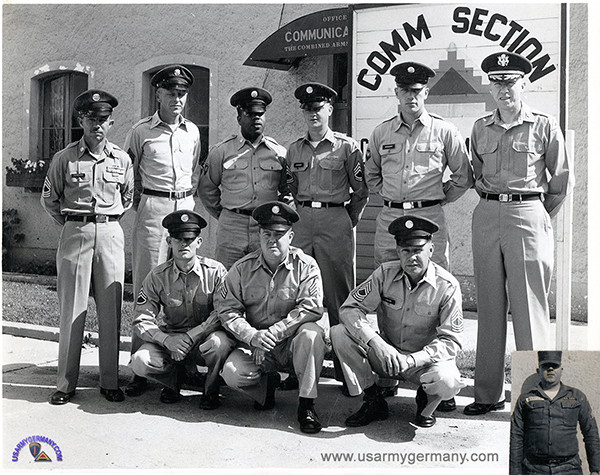
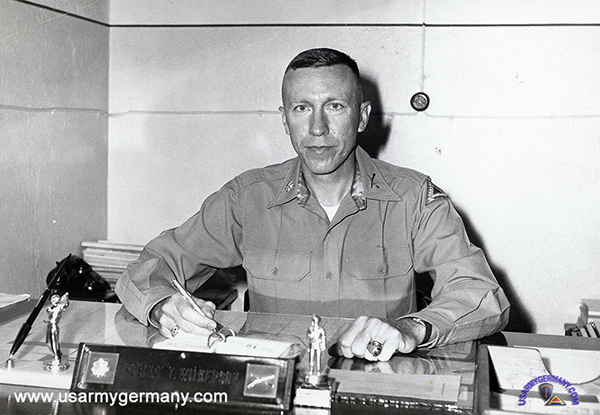
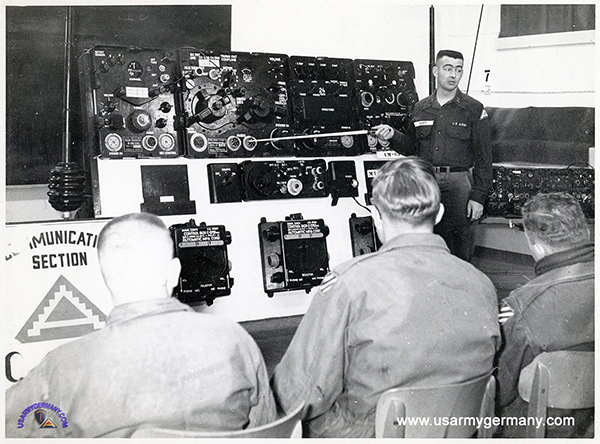
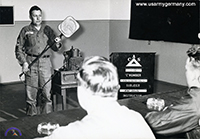
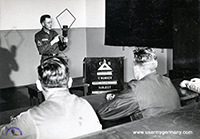
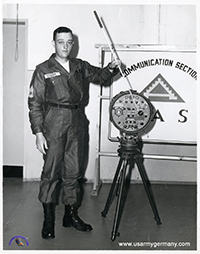
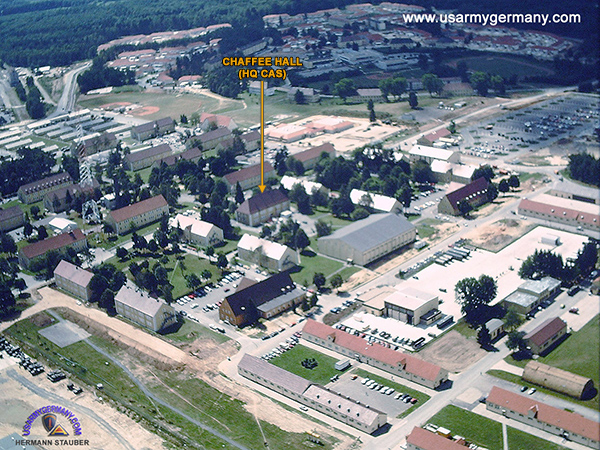
 Vilseck 600.jpg)
